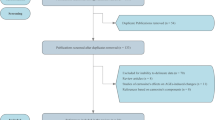Abstract:
Aminoguanidine (AMG) was prepared more than 100 years ago. During the last 10 years two important effects of AMG have been discovered which have made this molecule attract a lot of interest. Firstly, AMG inhibits, in vitro and in vivo, formation of highly reactive advanced glycosylation end products (AGEs) associated with pathogenesis of secondary complications to diabetes and with cardiovascular changes in aging. AMG ameliorates various complications to diabetes and prevents age related arterial stiffening and cardiac hypertrophy, effects probably dependent on inhibition of AGEs formation. Secondly, AMG inhibits NO synthase particularly the inducible NO synthase isoform making AMG an important pharmacological tool. The inducible NO synthase isoform is associated with production of large quantities of NO synthase in response to e.g. cytokines. When these effects of AMG were disclosed it had already been known for many years that AMG, in nM concentrations, inhibits diamine oxidase. This enzyme catalyzes degradation of biologically active diamines such as histamine and putrescine. Data obtained from studies using AMG should be interpreted with precaution since this substance interferes with several important regulatory systems. In this review these important targets for AMG are addressed.
Similar content being viewed by others
Author information
Authors and Affiliations
Additional information
Received 26 February 1999; returned for revision 4 June 1999; accepted by E. Neugebauer 25 June 1999
Rights and permissions
About this article
Cite this article
Nilsson, BO. Biological effects of aminoguanidine: An update. Inflamm. res. 48, 509–515 (1999). https://doi.org/10.1007/s000110050495
Issue Date:
DOI: https://doi.org/10.1007/s000110050495




